The food and beverage vernacular of “Australier” (as many citizens say) has given me pause and lots of laughs. Things like:
-
- “have a feed” — i.e. “We are about to have a feed if you want to join us.” Used for both a quick bite and a more leisurely, social dining experience. For the record, you can also “have” a sleep — a phrase usually used in reference to naps.
-
- “smashed it” — used in reference to ice cream or any other food that you more-or-less inhaled.
-
- “Golden Gaytime” — everyone loves a Golden Gaytime. It is definitely something most people “smash.” First released in 1959, it is a toffee and vanilla ice-cream dipped in compound chocolate and wrapped in honeycomb biscuits, on a wooden pop-stick. Yes, you should now board a plane to Australia so that you, too, may experience the heavenly wonders of a Golden Gaytime.
-
- “crib room” — no one can explain to me why the staff break area is called a “crib room” or why your packed lunch is referred to as your “crib.” But nonetheless, twice a day we go to the “crib room” for “smoko” and “have a feed.”
-
- “a chewy” — It’s okay to say yes when someone asks if you want “a chewy.” It’s just a piece of gum. Australians love using the diminutive.
-
- “on channel nine” — closely following the pattern of cockney rhyming slang (heck… maybe it is cockney rhyming slang), this phrase explains that an individual is drinking a beverage derived from grapes. “Mate! On channel nine, are ya?”
-
-
“Bob Saget” — derived from the same pattern as the above, but stretched another degree. Being drunk is often referred to as “maggot.” As in, “Oh mate, when we left for the city at 10:30, I was already maggot.” Extrapolation: “It was New Year’s Eve, and I was seriously Bob Saget.”
- “quick f#ck” — Pardon my French! While “Midori” is a melon-flavored green liqueur not generally used in the U.S., here it is common on bar shelves and often topped with Baileys in a 2 oz. glass. The shot is called a “quick f#ck,” and is available pre-poured in packs of four at alcohol retailers. For the record, I’ve never had one, but I made several when I worked in New Zealand.
-
While we’re on the topic of alcohol, let me just say that Australians* love drinking. Yes, even though a six pack of crappy beer is about $21. Yes, even though their legal driving limit is .05 instead of .08. Yes, even though a pint at the pub can run $10 or even $11. This is why, at my recent job, employees were required to take a breathalyzer test every morning. And why the phrases “8 before 8” and 10 before 10” were coined — those are how many beers conventional wisdom says one can safely consume before either 8p.m. or 10p.m. and be fairly certain that they won’t “blow numbers” the next morning at their “breatho.” (I mentioned Aussies love the diminutive, right?) The entire work day before our Rostered Day Off at camp (basically a scheduled swilling session), every small-talk conversation turned to whether or not the participants planned on drinking themselves silly later that evening. Other booze-related delights:
-
-
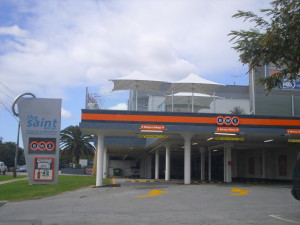
“The Saint” – one of the most infamous drive-in bottleshops in Perth. They have at least three lanes!
Drive-In Bottleshops — Americans laugh when they come to Wyoming — my home state — and see drive-up windows on the sides of liquor stores. Australia goes a step farther and actually has drive-ins. In a hybrid- 1950’s Drive-In/modern American bank or pharmacy, you simply drive into the middle of the store, hand over your cash to the clerk who passes your purchase in through the window, and drive away. (Yes, it is possible to get out of your car and browse, and there are many vendors whose location prevents the possibility of this service, but the fact remains that drive-IN liquor stores really exist!)
-
-
- Bundy — short for Bundaberg, this is a type of rum generally enjoyed by a certain demographic. A Bundaberg aficionado told me in anticipation of a Bundy session, you ” have the fight before you drink the bottle so can be friends after.”
-
- Chucking on a Carton — thank god this has nothing to do with vomiting. In the mining camp culture, any occasion or a work-related error calls for this penance. It’s your birthday? You buy a carton (a case, which is $50-$80 depending on what you’re drinking) for all your mates to enjoy. Broke something at work? Chuck on a carton. Leaving the job? Chuck on a carton.
You know what Australians don’t love? Eating. Yes, they enjoy food, but not to the celebratory degree that Americans do. (Although I will say Australians are collectively packing on the pounds at a rate that alarms public health watchdogs.) And “blokey” Australians loathe edibles while drinking — “Eating is Cheating!” Food-related things I found bizarre in the land down under:
-
- No Empty Platters — The instructor for a training I attended brought a tray of delicious cakes and cookies into the classroom. It had roughly two of said items per person in the training (Yes, I counted). At the end of our fifteen minute break, more than half the tray remained! (Yes, I then ate a few more).
-
-
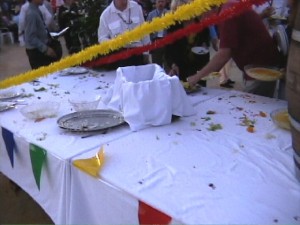
Full disclosure: I nabbed this picture off the internet. But I feel it’s a good representation of the aftermath of any free, public American eating occasion.
No Sloppy Seconds — at my first company BBQ, complete with steaks, hamburgers, and sausages, almost no one went back for seconds. I’m sorry, but at any free public feeding frenzy in the U.S., especially in a blue-collar work place, it’s my experience that people don’t stop eating until the only thing left on the table are a few shriveled carrot sticks and a limp piece of broccoli.
- Baby Coke — The small serving sizes available surprised me. I’ve seen half-cans in the U.S., but I don’t see many people actually buying them. Here all those delightful packages of sugar-water come in miniature, and at only twice the price!
-
-
-
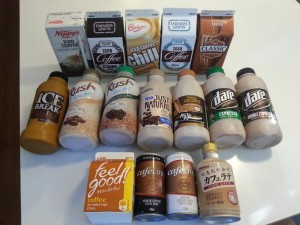
Excessive clicks, beginning with this photo, will lead you to a review of all picture iced coffee brands. Exciting!
Cold Coffee — I’ve talked about Iced Coffee before. This stuff is like a monster-frappucino, delivering 400 calories in a single serving — a far cry from the aforementioned Baby Coke. It even comes in half-gallon jugs! They should really call this stuff “Sugar Milk, now available with coffee flavoring!” Like I said before, health professionals are chewing their fingernails over an American-scale obesity epidemic many feel is just around the corner.
-
-
- Doritos Deficit — here’s one for team slim-Australia. At a major supermarket in Perth in search of tortilla chips for homemade Mexican (god I miss Mexican), my jaw dropped when I entered the chip
aislearea. In most U.S. grocery stores, this “food” fills the shelf space from the front of the store to the back. In OZ? Just one little section!
- Doritos Deficit — here’s one for team slim-Australia. At a major supermarket in Perth in search of tortilla chips for homemade Mexican (god I miss Mexican), my jaw dropped when I entered the chip
-
- Long-Shelf-Life Milk — ew! It’s like the twinkie of the “substances to add to your coffee” world. This is milk that’s been ultra-pasteurized so that it no longer needs refrigerated until you open it. Bonus: it can sit for days in the hot sun without “going off.” It was my only choice for several months, so drink it I did.
-
- Eat MEAT! — I found it hilarious that the T.V. displaying the cafeteria’s menu at the camp where I lived also dispensed nutrition advice, including this gem: “eat red meat at least three or four times a week.”
-
-
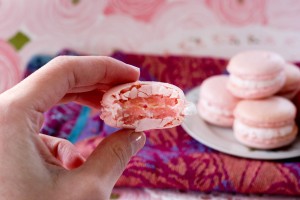
Why are macrons so expensive? Part hype, part pain-in-the-you-know-what to make.
Macrons — Aussies are macron mad! What is it? Basically a really expensive, tiny French cookie. Places vending baked goods will often have signs that say things like, “2 Macrons for $6!” I always think, “And this is supposed to be a good thing? Paying $3 a bit for a giant lump of sugar?”
-
Ahh… which brings us to money and the cost of living in Australia. When it comes to needs — ramen noodles, rice, beans, and lentils — things in Australia aren’t that much more expensive. However, a pint of nice ice cream is $8. Gas (called “petrol”) is $6-$7 a gallon. A second-hand t-shirt is ten times more than 50 cents. A decent bottle of wine is hard to get for less than $20. Candy bars are $3 each instead of 3 for $1. A meal out is an easy $20. A nice meal out is closer to $50. Bowling is $20. ($20!! For Bowling!). So is a ticket to the movies… that’s before popcorn. At $5 each, I stopped buying avocados. In short, Australia is a tough-pill to swallow for many Americans thanks to our massive population coupled with our culturally entrenched entitlement regarding obtaining things cheaply. It took me several months of exposure to Australian expenses (and a few fat paychecks) before I even began to accept preposterous price tags. I’m proud to say by the end of my year-long visa, I barely felt nauseated when paying $5 for a little container of floss! ♣
Previous Australian glossaries of terms and cultural observations:
Is That a Banana in Your Pocket”¦?
Why Everyone is Talking About Pot Plants
Why Australians Convert Cars to LPG
Australian Vocab Lessons & How I Misplaced an Entire Day
*clearly when I say “Australians” I am not actually referring to every single one of the 22 million people on the island-continent. My observations reflect a year spent in Western Australia and mostly in a blue-collar world.
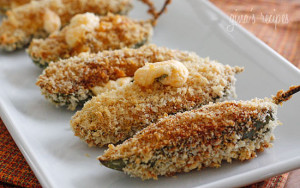
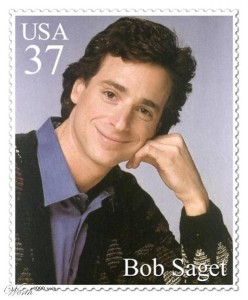




4 pings